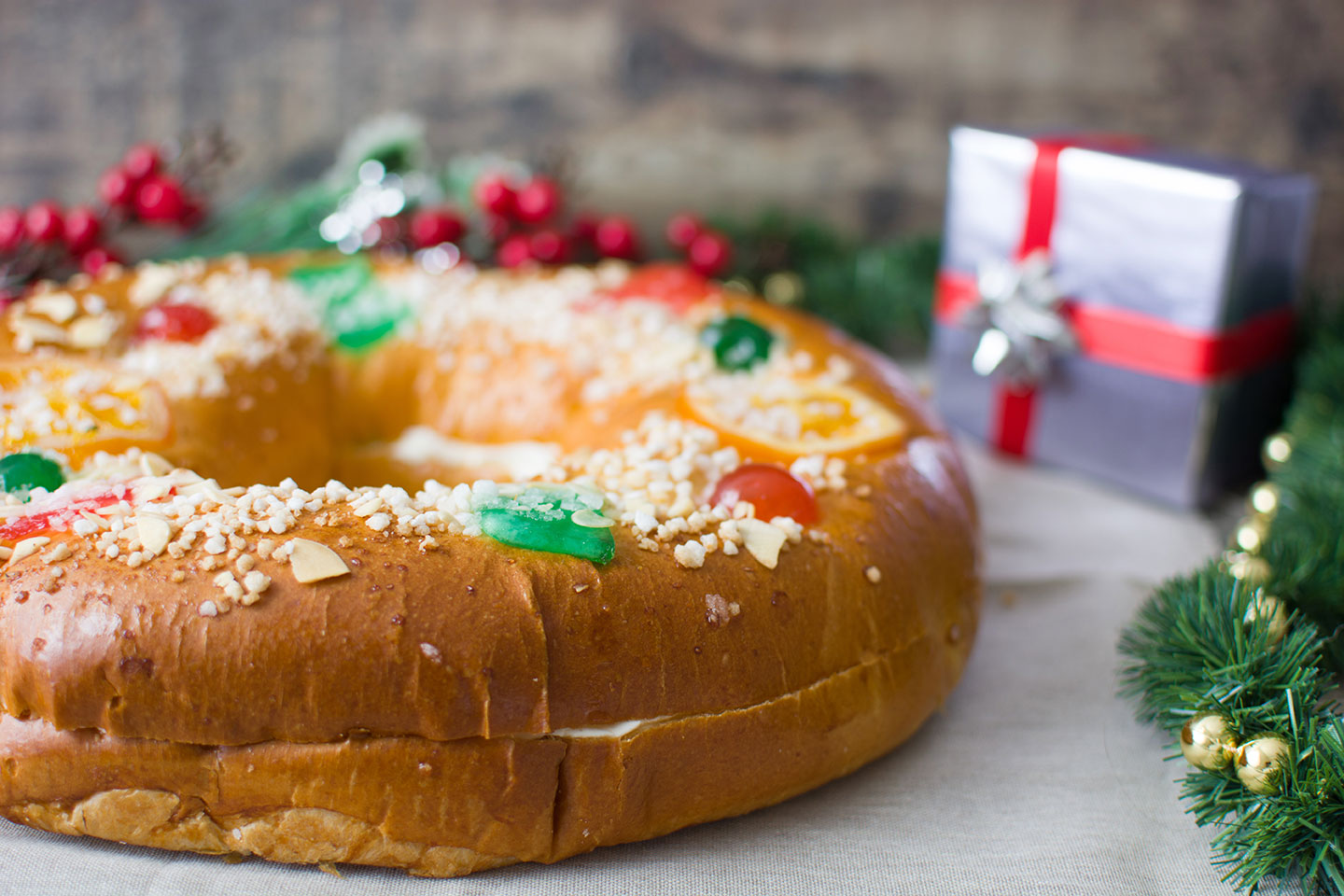The Roscón de Reyes
This is one of the most popular Christmas sweet treats and its consumption is a
long-maintained tradition in Spain, despite the fact that it marks an end to the
Christmas holidays. Its characteristic flavour and its varied fillings make it a firm
favourite among those family members with a sweet tooth.
fresh food
Share

In most Spanish homes the Roscón de Reyes is consumed on January 6th, either for dessert, for an afternoon snack or for breakfast with a cup of hot chocolate. It is also often consumed on January 5th and, increasingly, during the whole Christmas period. In addition to Roscón de Reyes, it is also called 'Rosca de Reyes' or just 'Roscón' and in Catalonia 'Tortell de Reis'.
It is made with a mixture of bread flour, sugar, milk, butter, eggs, fresh yeast, orange blossom water and orange and lemon zest. It is precisely these last ingredients that give the Roscón its characteristic citrus flavour. It is shaped like a ring or crown and adorned with coloured frosted fruits that, it is said, imitate precious stones. Inside it hides two surprises: a bean and a figurine. Tradition says that whoever finds the figure will be crowned king, while whoever gets the bean will pay for the roscón.
Origin
Despite its popularity, its history and tradition is little known and even a point of contention, depending on the historian consulted. Some say it comes from the Roman 'Saturnalia', a pagan festival that was celebrated every December, and where round cakes made with figs, dates and honey were distributed. Inside was hidden a dry bean, a symbol of prosperity, and whoever received it was acclaimed 'king for a day'.
Centuries went by and in the France of Louis XV the bean was replaced by a gold coin. It became popular throughout Europe and arrived in Spain at the hand of Felipe V. In the 19th century the gold coin was replaced by a figure and the bean was reintroduced but this time with a negative association, which has lasted to this day. Whoever got the bean had to pay for the cake. They say that is why the expression 'tonto del haba' (the bean fool) came about.
However, other historians site the origins of the tradition of celebrating January 6th, or Epiphany, with the roscón de Reyes, in an 11th century Christian festival known as 'the king of the bean'. As part of the festival, a child was chosen from among the poorest of the town to be crowned him as King of the Epiphany and be given gifts. Also, in people's homes, a large roscón was made in which a surprise was hidden and whoever received it in their slice was crowned king and got to preside over the table. Lastly, the origin of the Roscón de Reyes is also attributed to it being an edible representation of the 'Advent wreath'.
The most popular filling
Although, it seems that this sweet bun was not originally filled, with the passage of time it the dough was lightened with cream so that it would not be so dry and heavy. In fact, the 'roscón de nata' (cream-filled roscón) is the most popular in our country, although other types of filling are also common, such as chocolate, confectioner's cream or angel hair, among other.

Leyend of the Roscón de Reyes
"Here is the roscón de Reyes, a great banquet tradition which conceals two surprises for those who are lucky. In it, very well hidden, there is a bean and a figure; whoever is going to cut it must do so without mischief. Whoever finds something a bit hard in their mouth, may have the bean, or they may have the figure. If you have found the bean this dessert you will pay, but if it is the figure, you'll be crowned and King for a day".
Nutritional value
Like most Christmas sweets, Roscón de Reyes is a calorific dessert, rich in carbohydrates and high in sugars. It has a reasonably high fat and cholesterol content, so we should not overindulge. It is rich in vitamins A and E and minerals such as iron, magnesium, zinc, and calcium.
Originally, the Roscón de Reyes was not made with filling. This latter was introduced over time to lighten the dough so it was not so dry and heavy.
Worldwide
- Portugal: it is called Bolo Rei and the ingredients are somewhat different from the Spanish ones, as the dough has dried fruits (walnuts, pine nuts and almonds) and raisins added. However, on the outside, it is very similar in appearance to that consumed in our country.
- France: the tradition of eating this sweet treat on Three Kings' Day also exists, and it is called Couronne or Galette des Rois.In this case it is totally different from the Spanish Roscón because it is made of puff pastry, pastry cream and almonds.
- Latin America: the custom was exported from Spain in the 16th century to countries such as Argentina, Mexico or Venezuela, but it is known as Rosca de Reyes. In Mexico, this sweet is garnished with honey, dates and figs.






